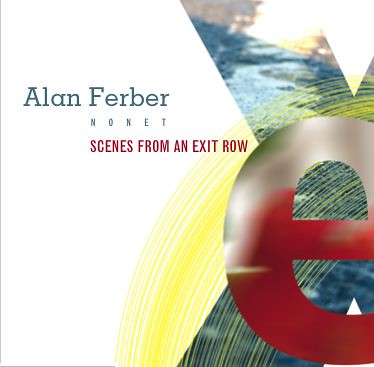Being a professional musician has many benefits and a few drawbacks as well. One drawback is that it is hard to listen to music simply as a music lover. I am often analyzing music as I listen, or making judgments about aspects of what I am hearing that I want to incorporate or avoid in my own music. It is rare that I hear something that really hits me in a visceral way, and makes me want to listen just for fun, but when I do hear that music, it reminds me why I play music.
The first time I remember hearing (actually reading) about Ken Vandermark was shortly after he was awarded the Macarthur Grant. Downbeat did a story about a Brotzmann Chicago Tentet tour. A year or more later, I downloaded a couple of Vandermark 5 albums from eMusic. Sometime after that I heard Jeb Bishop’s trio, with Kent Kessler and Tim Mulveena, at the Blue Nile in New Orleans. They were playing Jeb’s music, not Vandermark 5 material, but it was 3/5 of that band, and hearing people make music live usually connects better than recordings.
One of my initial reasons for wanting to explore the music of the V5 was the presence of trombone. After hearing Jeb in New Orleans, I began to search out recordings that featured him. (Full Disclosure: Jeb has since become a friend and he has been invited to contribute to Scratch My Brain. So if you are thinking that I am just writing nice stuff about my friends, you are right, but I was digging the music before we met.) This led me to a number of V5 albums, and the music hit me in that way that makes me want to just listen and enjoy.
Much of what moves me about the V5 is the variety. At times it swings really hard, and at other times it can be funky or noisy, or sound like a punk band in 7. I like having any style or vibe available at any time. As a listener, I love not knowing what will come next.
There are a couple of recent releases by the Vandermark 5 that I am really enjoying these days. Their new studio CD is called Color of Memory. There is another recent release called Alchemia that is a 12 disc limited edition box set of a week’s worth of live performances in Krakow. These two releases are great companions. There are several tunes on Color of Memory that were written during the week in Krakow, and on Alchemia we get a chance to hear these tunes develop.
Ken Vandermark has been very outspoken about that fact that the best way to experience the music of his bands is through regular live performances. Hearing the band a number of times in close proximity allows the listener to hear developments that would be missed in any single performance. That is hard to do unless one lives in Chicago, because even in major cities it is rare that the band would play more than one or two nights consecutively. Alchemia gives us all a chance to hear every note the band played over the course of 5 consecutive nights. The V5 staples, the new tunes, a jazz standard or two, and the free jams with local guests are all there. It is a musical listening experience that is unheard of via recorded music.
I think that tradition is an oft-misunderstood concept in jazz. Too often, sounding like the past is mistaken for respecting the tradition. I believe the spirit of the music is the most important part of the jazz tradition, and that spirit is exciting and honest and probing, and musically inclusive. These new Vandermark 5 recordings have that spirit.
Both Color of Memory and Alchemia are available from the Atavistic website.



